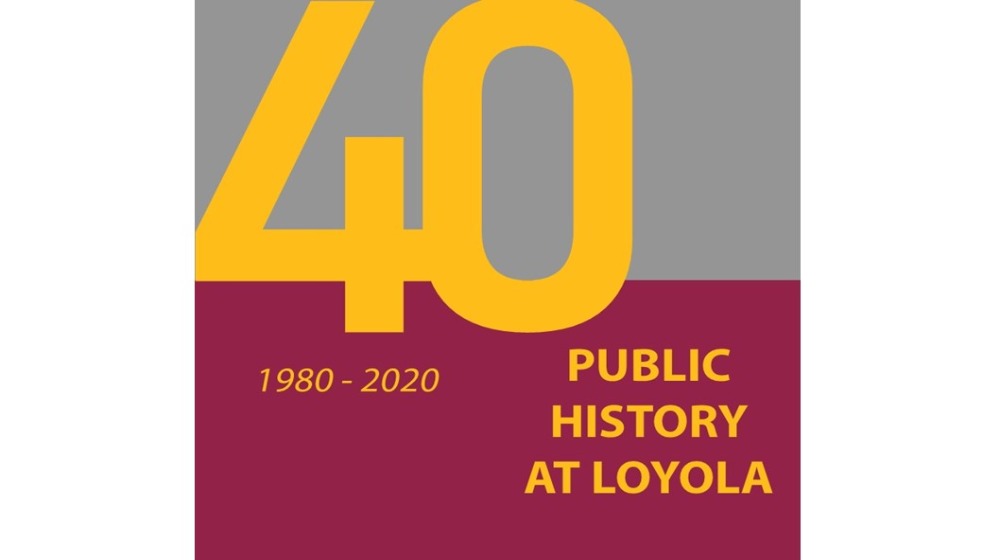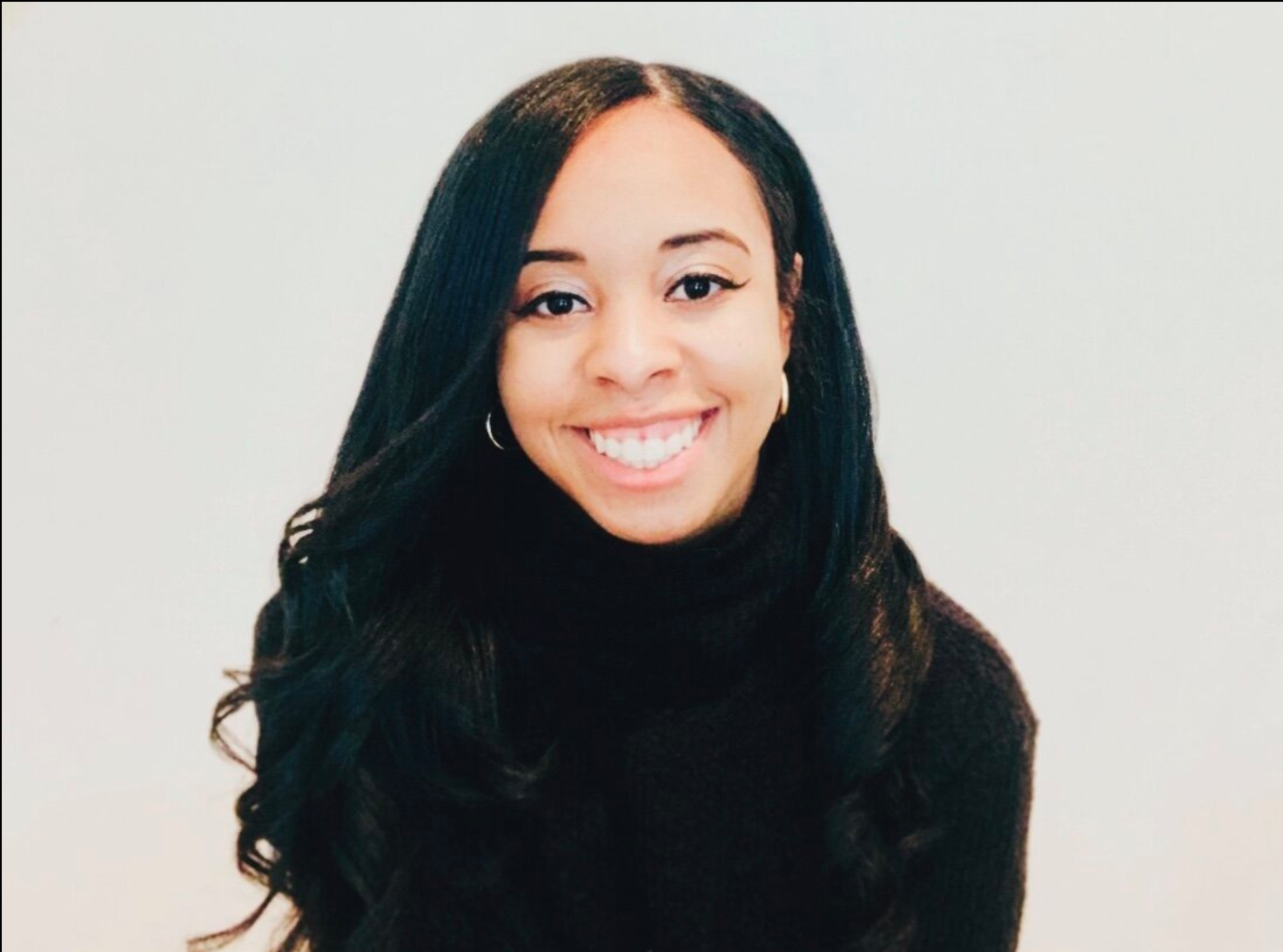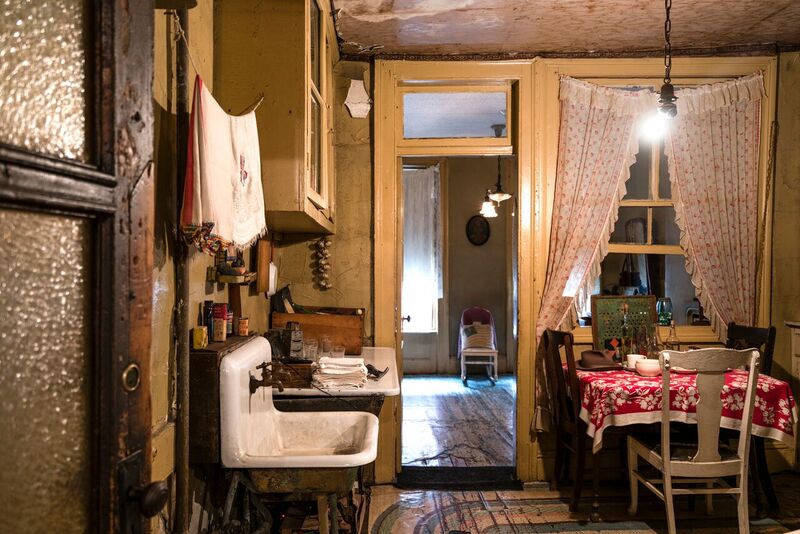archive
I am delighted to announce some good news: this month, the History Department’s Public History Program received the prestigious 2021 Founders Award from the National Council on Public History (NCPH). The award recognizes four decades of leadership by Loyola historians in nurturing, growing, and transforming the practice of public history in the U.S.
The NCPH award citation recognizes the entire Loyola Public History Program, but it especially spotlights the work of faculty Ted Karamanski and Pat Mooney-Melvin. Both have served as president of the NCPH, as board members for many years, and as editorial board members of the NCPH journal, The Public Historian. Both played formative roles in the NCPH’s early years during the 1980s, with Dr. Karamanski leading the national effort to develop a code of ethics for public historians and Dr. Mooney-Melvin working to develop pedagogies for the teaching of public history at universities across the country. And both continue to tireless promote the field of public history, encouraging new generations to explores its boundaries and diversify its practice.
The award citation also highlights the reach of Loyola’s Public History Program and the varied ways it has contributed to and shaped the important process of sharing history and historical insights in a wide range of venues. Over 200 graduates completed an impressive array of public history projects while at Loyola and then gone on to work across the country in museums, historical societies, government agencies, and universities. Our public history network continues to thrive and our graduates represent an important part of our program's success.
Numerous faculty have been involved in growing our Public History Program over many years, and it is worth listing them: Elizabeth Fraterrigo, Elizabeth Hopwood, Kyle Roberts, Kathy Young, Chis Manning, Meaghan McChesney, Janet Nolan, Harold Platt, Terri Fife, Valerie Browne, Patrick Quin, Calinda Lee, and Louise Año Nuevo Kerr.
Both the NCPH and Loyola’s Public History program started in 1980 and both celebrated their 40th anniversary last year. I expect the tight bonds between the two programs will continue for decades to come, as the practice of public history is more essential than ever as our nation seeks to tell new stories about its past and wrestle with its difficult history.
Congratulations to the Loyola Public History Faculty, and especially Drs. Karamanski and Mooney-Melvin, for a career’s worth of accomplishment in defining and transforming the field of public history.
D. Bradford Hunt, History Department Chair
Click here to view a brief video presentation of the 2021 NCPH Founders Award. 
30 March 2021
The Herbert Feis Award is a prize "offered annually to recognize distinguished contributions to public history" by the American Historical Association. Dr. Theodore Karamanski, founder of Loyola's own public history program was named the 2021 prize winner in October. MA Public History student Kenleigh Howard sat down with Dr. Karamanski to gather his thoughts on his career, projects he's proud of, and any words of wisdom for young professionals
KH: You've been an active participant in the field of public history since its official beginnings, holding several official offices over the years like a term as President of NCPH, and Director (and founder) of Loyola's Public History Program. Although each is unique, what would you say has been the most rewarding experience?
TK: I was NCPH President in my 30’s. I was the youngest of the folks involved in founding NCPH. I felt a lot of other people were more experienced, so I was intimidated at the start. Yet like most things related to public history I just jumped in, gave the job my best shot. I was hurt because the sole NCPH staff member went down with AIDS, and I had embarked on a campaign to increase membership. It was a lot of work all on my own to set up membership chairs in every state in pre-internet days. But in one year membership jumped 17%. The other thing I was proud of was running a national search for an institution to host the NCPH HQ. The final selection was quite heated, but I cast the deciding vote that selected Indiana University, Indianapolis and we are still based there more than three decades later.
Directing public history has been rewarding because of the wide variety of projects and especially because of the marvelous students I have been privileged to work with.
10 November 2021
KH: The Herbert Feis Award is largely focused on "the result of years of effort in the field," which your accomplishments certainly speak to. What have been some of the most memorable projects you've led or participated in? Which projects are you most proud of?
TK: I have done a lot of projects. One of the first was the three-year archaeological study of Millwood Plantation in South Carolina in which I handled a lot of logistics for our head archaeologist and senior historian and did fascinating local history research that got me interested in the Civil War era. Really formative were several long projects for the Forest Service in northern Michigan. We did innovative work saving the Forest service thousands of dollars. Most rewarding was working with grad students over the entire summer in the field doing oral histories and tramping through the forest looking for old logging camps and ghost town sites. It was a fun mix of history and wilderness adventure. The same could be said for my summer working for the National Park Service in Alaska exploring abandoned gold rush sites by float plane or boat, mapping sites and interviewing backwoods old timers.
KH: What impact have professional groups like the AHA and NCPH made in your career?
TK: I am grateful to AHA for the Feis Award but even though I was a member for more than thirty years I never was much involved save for going to the annual meeting every few years. NCPH, on the other hand has been the professional home in which I grew up. The founding of the organization was incredibly exciting in part because the senior people involved were so welcoming and supportive to a novice like me and because it was clear we were blazing a new trail for the history profession. My closest friends in the profession were all made through NCPH including my valued colleague Patricia Mooney-Melvin.
KH: What words of wisdom do you have to offer to new generations of public historians/emerging professionals?
TK: There is a quote I found as a student that I fall back on when facing a challenge. It is from the sailor-novelist Joseph Conrad’s book Lord Jim: “To the destructive element submit yourself, and with the exertions of your hands and feet in the water make the deep, deep sea keep you up.” In other words, embrace every opportunity, trust your ability to master the situation through hard work.
KH: Just this year, you published another book, Mastering of the Inland Seas: How Lighthouses, Navigational Aids, and Harbors Transformed the Great Lakes and America. Are there any future works people should look forward to from you?
TK: I am a little more than halfway through a book that will be an environmental history of Lake Michigan. At the same time Mooney-Melvin, Katie McGranahan, and myself are halfway through a cultural sensitivity project with the Cook County Forest Preserve District. There always is the vexing balancing act between doing public history and writing for publication.
Loyola MA Alumna Leads Re-interpretive Project at Lower East Side Tenement Museum

A June 9, 2021 article in the New York Times tells about an ongoing reinterpretation project at the Tenement Museum on New York City’s Lower East Side. The thrust of the project is an attempt to restore more African-American experiences and perspectives to what has largely been a Black-excluded narrative of American immigration. The Tenement Museum project coincides with larger revitalization efforts as museums across the country reopen from the COVID-19 pandemic and seek to confront race and racism’s role in the creation of historical narratives and provide more inclusive story’s of America’s rich and complex past.
Lauren O’Brien, a Loyola History MA alumna and a current PhD Candidate in American Studies at Rutgers University-Newark, has played a major role in the recent endeavors at the Tenement Museum. She shared with us the story of how she became involved:
“In 2019, the Tenement Museum issued a public call for proposals for a lead project scholar to develop a new walking tour in partnership with the NPS African Burial Ground and after a generous nudge of encouragement from a classmate I decided to apply. I was initially a little hesitant in applying because I didn’t consider myself yet a real “scholar” because I was still a PhD student. However, I had spent the past several years teaching undergraduate courses in African American history and archiving urban palimpsests of slavery and Black placemaking made invisible through urban renewal in cities like Chicago, Newark, Washington D.C. and Cape Town, South Africa. Additionally, my professional experiences in museums like the Smithsonian National Museum of African American History and Culture (NMAAHC) and the Jane Addams Hull-House Museum had enriched my understanding of African American history while simultaneously cultivating my skills in designing multimedia tours and exhibitions, facilitating community dialogues/public programming, and conducting archival research. Although each experience added a variety of unique skills to my professional repertoire, collectively they refined my professional toolkit, shaping me into a strong candidate for the Lead Project Scholar of a walking tour of African American history in Lower Manhattan.
“I spent about 10 months on the Reclaiming Black Spaces walking tour and built strong relationships with the staff and community partners during that time. Consequently, when the idea for the new Joseph Moore exhibit came about, I was invited back again as the primary research consultant.”

Lauren directed the Joseph Moore Exhibit, which is the Tenement Museum’s first major re-attempt to interpret Black family lives in some thirty years. Lauren described to us her responsibilities:
“For the Joseph Moore Exhibit, my main responsibility was to conduct research on a range of topics related to the story of a Black couple named Joseph and Rachel Moore, the history of Black residents in New Jersey and Lower Manhattan, and Irish-Black relations during the mid-19th century. The primary goal was to provide historical context for the world that Joseph and Rachel would have experienced and identify material culture and primary sources that could be used to reinterpret this story in a house museum exhibit.”
Lauren uncovered several interesting discoveries in the course of her work. “One that is my favorite was a 1989 letter to the Tenement Museum’s founders by a multi-generational Black New Yorker, named Gina Manuel. In her letter Manuel urged the founders, “when you are planning the museum, I beg of you, please, please don’t forget them…Their spirit walks those halls, and their bones lay in the earth there, and we remember them.” Manuel, the descendant of George T. Downing, a famous 19th century Black oyster restauranteur, was intentional in preserving and advocating for her ancestors’ histories, so my goal was truly to honor her work and many others invested in this story in a way that was authentic to the Tenement Museum.”
~~~~
Lauren was able to relate her work on the Joseph Moore project back to her experiences at Loyola. She said, “One of the first courses I took at LUC was HIST 480: Public History: Method and Theory with Dr. Mooney-Melvin and we had a group project to develop a neighborhood tour that would be pitched to the Rogers Park/West Ridge Historical Society. That project required a blend of archival history, community collaboration, and creativity that placed all the theoretical public history lessons learned in the classroom into practice. Although I had previously held some museum internships while an undergrad, I was a student on the MA US History track so that course was my first real introduction to public history and me beginning to imagine what a career in public history would look like for me.”
While she is wrapping up her doctoral degree program at Rutgers, Lauren is also a curriculum writer for the New York Public Library’s Schomburg Center for Research in Black Culture. She currently spearheads a project developing Black history curriculum for grades 6-12 utilizing primary source documents and artifacts from the Schomburg Center’s archival collection. Lauren is also looking forward to wrapping up her dissertation and defending this upcoming fall!
Finally, we asked Lauren what advice she would give current Loyola graduate students. “Be open to a wide range of career pathways and take a bold approach in “shooting” your professional shot. Don’t allow yourself to be boxed into what you think a public historian can do or is, there are so many projects that we are trained perfectly for but might have a job title we may not have considered. Rejection is tough, but I think imposter syndrome really blocks a lot of opportunities for graduate students. My grandmother encourages me to reframe the question of “Why me?” to “Why not me?”
